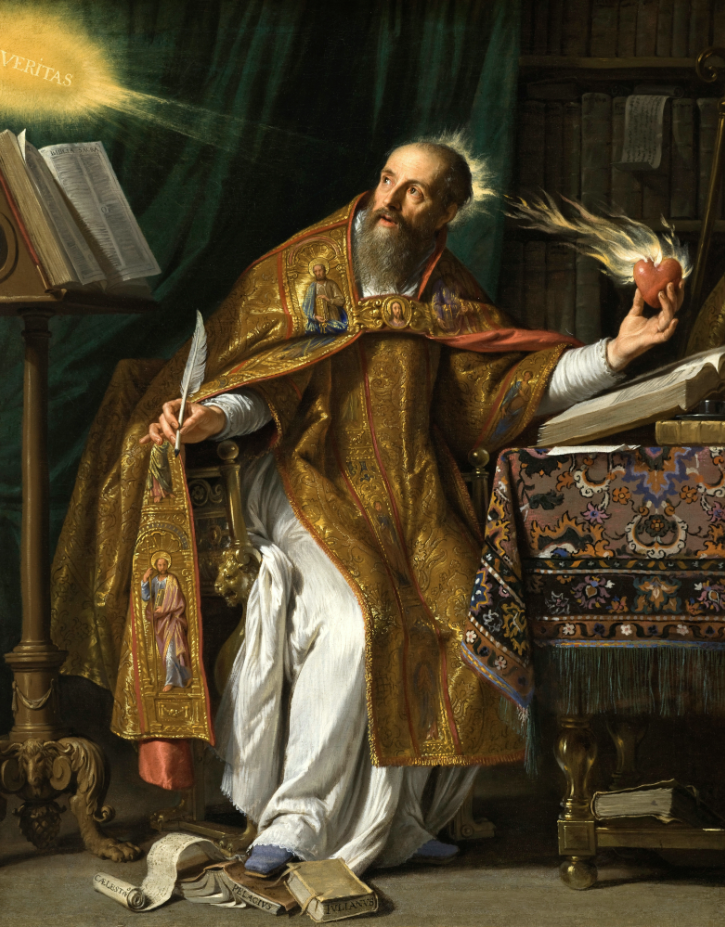
Descartes’s criterion of “vivid and clear perception” (or “clear and distinct perception” in another translation) from the beginning of the Third Meditation is a continuation of the Divine Illumination tradition which would have been part of Descartes’s Jesuit education. This tradition involves several things we’ve talked about in passing that would be good to fill in, but you don’t need that whole story to understand what Descartes is doing with this phrase. And it’s helpful to know at least the basic idea that Descartes is drawing on in this phrase—without knowing this history, it seems like a completely weird move for him to say “I now seem to be able to lay it down as a general rule that whatever I perceive very vividly and clearly is true” (Third Meditation, end of p. 9).
The short version is this:
The general idea of what becomes called “divine illumination” is that God (or something god-like) needs to allow us to know things. We can’t do it without the thing we know being “lit up” by God’s “light” so that we can see it—hence, “divine illumination.” The view is an epistemological parallel to the Medieval Catholic view of the role of grace in morality: The idea was that due to our fallenness and original sin, we can’t choose to do the right thing without help, and God grants this assistance to us as a form of grace. (Or he doesn’t, for reasons.)
This view is very much no longer held by Descartes’s time, but it’s still sort of in the background, at least in Jesuit education. Descartes would have been instructed using textbooks by Francisco Suárez (Spanish-Sephardic (Converso), b. 1548 Kingdom of Granada [Spain] – d. 1617 Kingdom of Portugal and the Algarves [Portugal]), who adopted the “naturalized” version of the view, which took the concern that motivated divine illumination seriously, but held that the things of the world were sort of “pre-illuminated” by God so that their truth is accessible to the human mind without ongoing divine illumination, which seems like a real time-saver for God (or at least it would be if God were not wholly outside of time, as was the orthodox view of the day).
The connection with the divine illumination tradition is highlighted by our translator’s prefatory note about translating “clarus et distinctus” as “vivid and clear,” with “vivid” evoking the idea of something brightly lit, and “clear” evoking the idea of something lit and visible in every edge and detail. In the context of the naturalized version of divine illumination, Descartes is saying that what he sees with the clarity of the cogito—something like Al-Ghazali’s “snake truth”—cannot be false because it is understood in its universality and in its essence, because God pre-prepared it for our knowing (assuming that God exists and isn’t a deceiver). He expresses this by saying he “sees” its truth “by the natural light”: this is a reference to and in contrast to “a divine light.”
The long version is a lot longer, but it explains why anyone would even think divine illumination was necessary to allow for human knowledge, and it covers some fun and wild metaphysics. We’ll do the long version another time.
(Image: Saint Augustine, by Phillippe de Champaigne [circa 1645–1650])